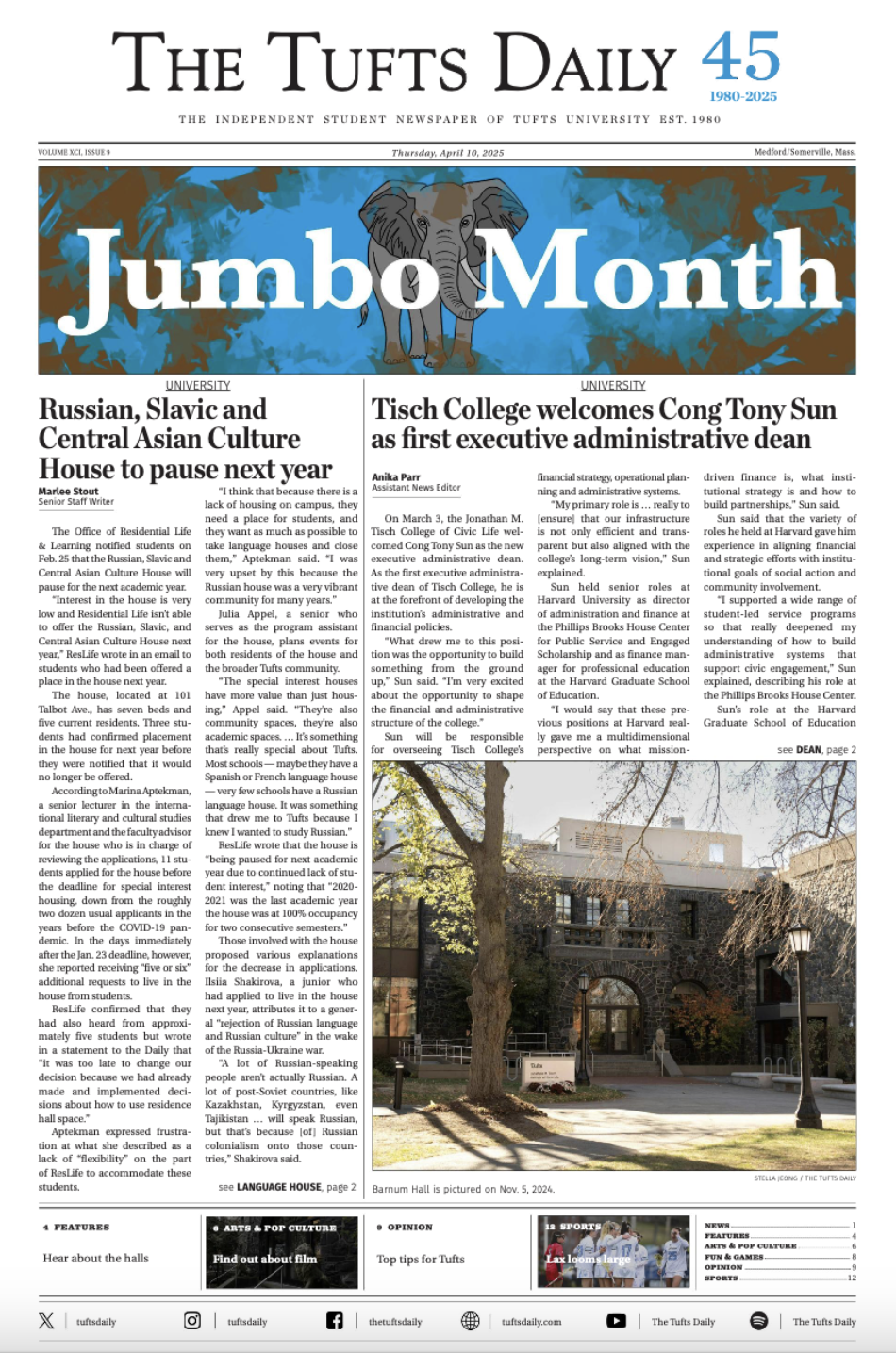News
August 4
The Boston area has certainly gotten a glimpse of Palestinian life and culture over the last month, with celebrations of Palestinian art through The Boston Palestine Film Festival (BPFF) and the photography exhibit From These Streets" at the Tufts University Art Gallery.Beginning on Oct. 18, the 10-day film festival featured over 30 films portraying Palestinian life, family and culture. It was hosted by the Museum of Fine Arts, Boston, the Cambridge Public Library and Harvard Law School.The films addressed issues surrounding the political occupation of the Palestinian territories and its effects on refugee camps, as well as offered a look at Palestinian culture. According to Assistant Professor of Anthropology Amahl Bishara, providing this alternative viewpoint is particularly important."We most often see Palestinians represented through the news and through political negotiations or acts of violence," Bishara said. "But the Boston Palestine Film Festival lets us think about Palestinian society and culture in a more multidimensional way."Tufts students who made it to the festival were exposed to films that showed Palestine through a more personal perspective. Munir Atalla, a member of Tufts Students for Justice in Palestine, attended the event and enjoyed the opportunity to screen the films."I'm so happy that the Museum of Fine Arts puts its weight behind such a sometimes controversial event," Atalla, a junior, said. "It's been going for eight years, and they keep upping the quality. It's also that Palestinian filmmaking has developed a lot recently, and we are starting to see more films that are competitive on a global level."The film festival, a program of the Middle East Charitable and Cultural Society Inc., is one of the larger events that the organization hosts throughout the year, along with discussions, film screenings and workshops throughout the Boston area. The mission of the festival is to showcase the Palestinian narrative and culture through cinema and art.Founded in 2007, the festival has since presented over 300 films, as well as hosted numerous Palestinian artists and filmmakers through concerts and exhibits. This year's festival was co-sponsored by various community groups, including the Center for Arab American Philanthropy, Jewish Voice for Peace Boston and Grassroots International.One film featured this year was "When I Saw You" (2012) from director Annemarie Jacir, who was recently named one of Filmmaker Magazine's 25 New Faces of Independent Cinema. "When I Saw You" is set in Jordan during the 1960s and documents a boy's journey after running away from his refugee camp.The BPFF also showcased "Just A Child" (2012), directed by Mohammad Al-Azza, who grew up in the West Bank in a refugee camp. The documentary short centers on a Palestinian teenager's life after he is released from an Israeli detention center in the West Bank. Though his release garners a positive response from the community, through his perspective, audience members gain an understanding of the more complex consequences of his return to the community.Bishara, along with students in her Media, the State and the Senses seminar, recently collaborated with Al-Azza to bring the photography exhibit "From These Streets: A Palestinian Refugee Perspective on Community" to the Slater Concourse Gallery, located in the Aidekman Art Center. The exhibit, which will run until Dec. 8, displays Al-Azza's photos depicting the Palestinian community.The young Palestinian photographer, born and raised in Aida Refugee Camp, Bethlehem, in the Palestinian West Bank, developed his photojournalism skills from a local youth organization called the Lajee Center. He later became the director of the Media Unit in the Lajee Center and continues to teach these skills to Palestinian youth in the area, according to Bishara."[The Lajee Center] is a community-based organization, and they do a lot of activities for children and youth," Bishara said. "One of the most thriving, successful programs they have is a media unit that teaches youths about documentary production and photography. And for me as a media scholar, it's a gift. It's just a really interesting story for me to think about and tell."Bishara expressed excitement about bringing the Lajee Center and Tufts together with the exhibit. Various university groups co-sponsored the exhibit, including the Department of Anthropology




